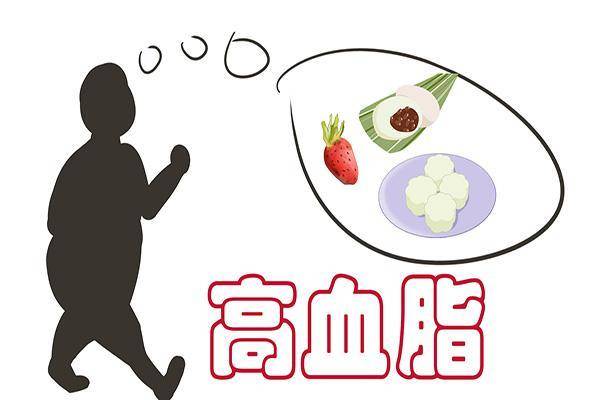Hyperlipidemia is a common chronic vascular disease, often referred to as the “three highs” along with hypertension and hyperglycemia, and is more common in middle-aged and elderly populations. When blood lipids are high, there is a high possibility of blood clots, heart attacks, strokes, and other cardiovascular and cerebrovascular diseases. If not controlled, severe cases can lead to sudden death, posing a threat to life. High cholesterol is an important factor leading to abnormal blood lipids. Therefore, to stabilize blood lipids, the first step is to cleanse the body of cholesterol. So, what should be done? Doctors suggest that you may consider eating foods that can lower cholesterol regularly, which can protect blood vessels and maintain overall health.
Cleanse Cholesterol by Eating These Three Foods
1. Soybeans
People often primarily think of soybeans as a source of protein, flavonoids, phytoestrogens that can slow down aging, provide energy, and help regulate hormone levels in women. However, soybeans can also inhibit cholesterol, reduce blood vessel pressure, and thereby stabilize blood lipids.
In addition, soybeans and soy products contain unsaturated fatty acids, lecithin, and vitamin E, which actively work to lower the levels of LDL cholesterol and triglycerides in total cholesterol. At the same time, they do not affect HDL cholesterol, thus maintaining a balance in the body. The saponin in soybeans can not only reduce blood lipids but also prevent and alleviate arteriosclerosis, protecting vascular health.
2. Kelp
Kelp is a common type of seaweed that is rich in iodine, promoting the health of the brain and thyroid. Additionally, it contains amino acids, fiber, and abundant dietary fiber alginate potassium, which helps regulate blood pressure, relieve constipation, and supply essential nutrients to the body.
What many people do not know is that kelp also contains unsaturated fatty acids that can clear cholesterol from blood vessel walls, promote cholesterol metabolism, maintain blood lipid levels, and safeguard vascular health. Furthermore, kelp contains pectin fiber, which effectively lowers cholesterol levels in the blood, balancing blood lipids.
3. Garlic
Garlic is a commonly used seasoning, with a pungent taste and antimicrobial properties. A study abroad found that fresh garlic can lower harmful cholesterol levels in the blood by 15%, thereby reducing blood vessel pressure and ensuring vascular health. Garlic powder products can lower cholesterol by 8%, which is beneficial for the body. This beneficial effect is attributed to allicin in garlic.
The study also found that consistent consumption of garlic or garlic powder daily for one to two months can lower blood pressure by 10%, preventing cardiovascular and cerebrovascular diseases, and maintaining overall health.
Therefore, if you have abnormalities in blood lipids, consider eating the above three foods to cleanse cholesterol, reduce cardiovascular pressure, and maintain good health.
For individuals with hyperlipidemia, it is essential to avoid greasy foods. Animal offal contains high cholesterol levels, so patients with hyperlipidemia should also avoid consumption. Additionally, foods with high sugar content, such as candies, chocolates, milk tea, cakes, etc., can convert sugar into triglycerides, increasing the burden on blood vessels and leading to hyperlipidemia.
How can you determine whether you have high blood lipids? Besides consulting a doctor, you can observe changes in your body.
If your body displays three abnormalities, consider the possibility of blood lipid abnormalities and promptly seek medical examination.
Abnormality 1: Cold hands and feet while sleeping
Under normal circumstances, hands and feet should be warm, especially while sleeping. However, if you have noticed cold hands and feet while sleeping recently, excluding factors such as indoor climate and humidity, you should consider blood lipid issues. When there is an excess of cholesterol, triglycerides, etc., in the blood, the flow rate decreases. As the hands and feet are at the extremities, without timely oxygenation from the blood due to the reduced circulation, they lack heat, resulting in coldness.
Abnormality 2: Abnormal snoring during sleep
Many people snore during sleep, which is not uncommon, but normal snoring should be continuous inhalation and exhalation. It could be due to abnormal sleep positions or over-exertion on the body or nasal issues. However, if the snoring is irregular, intermittent, and disrupted, and the individual seems to have difficulty breathing while sleeping, it may indicate abnormal blood lipids. It is advisable to seek medical advice and undergo tests promptly.
Abnormality 3: Leg cramps while sleeping
Leg cramps are often attributed to calcium deficiency, which is valid. However, if you experience leg cramps at night during sleep, you should be cautious of abnormal blood lipids. High cholesterol levels in the blood affect normal metabolism, with cholesterol accumulating within the muscles leading to abnormal contractions and cramping. Moreover, elevated blood lipids easily cause blood vessel blockages, disrupting blood flow, resulting in local ischemia in the legs, leading to pain and cramps. In such cases, it is recommended to have your blood lipid levels checked promptly and receive treatment as early as possible.


